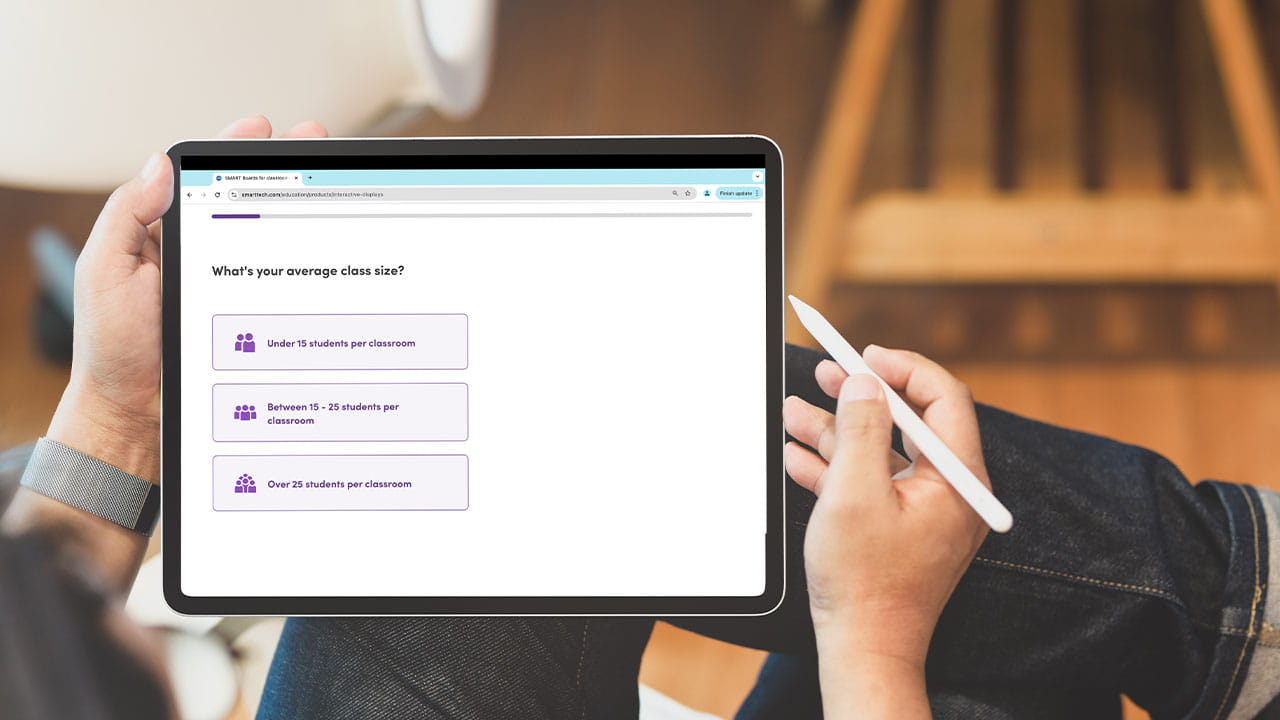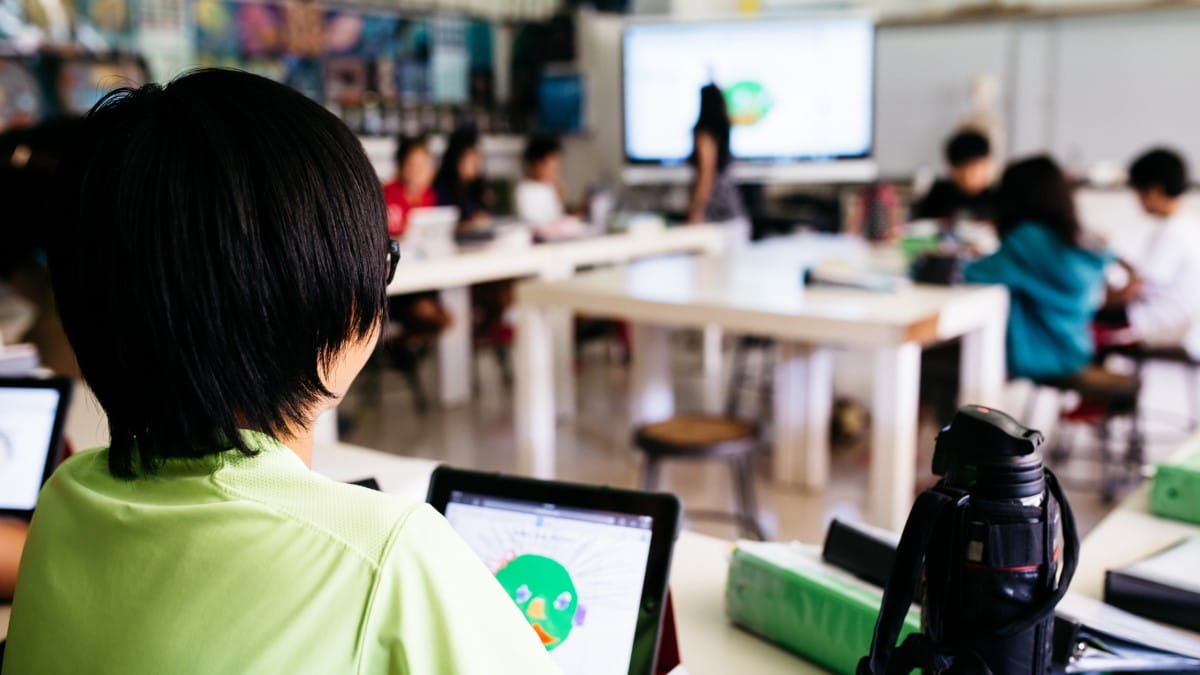Every student deserves to learn and feel pride in their school accomplishments. Teachers can create these moments more often when we design classrooms that welcome all students.
“Inclusion isn’t just a special education issue,” says Alex Dunn, Speech Language Pathologist. “It is simply the idea that everyone is always welcome.”
Rather than separating students based on abilities and differences, inclusive learning environments are designed to meet the needs of everyone in the classroom. Inclusivity benefits every student in a group, and students exposed to diverse peers are more likely to develop critical skills like empathy and adaptability.
With an eye on inclusion and the right technology, educators can remove barriers providing opportunities for students to learn alongside their peers.
“It’s about kids learning alongside others,” says Dunn. “It’s about being able to participate in collaborative lessons, socially and academically.”
In this article on inclusive learning environments, we’ll explore:
- What is an inclusive classroom?
- What does successful inclusion supported by tech look like?
- Using technology to create an inclusive learning environment
- How inclusive learning environments benefit everyone
What is an inclusive classroom?
Inclusive classrooms are learning spaces where every student is valued equally, and their talents are nurtured and respected.
No matter what educational setting a parent chooses for their child, across all settings, successful inclusion is about removing opportunity and access barriers so that all students can achieve meaningful social and academic participation.
To support inclusion, technology that removes barriers to participation can be incorporated to help bridge any gaps and keep everyone learning together.
“If we design learning spaces to meet the most complex needs in the classroom, it’s going to work for everyone,” says Dunn. “It’s about design that’s necessary for some, but good for all.”
We often hear from educators that inclusion in education becomes more difficult as students age. When we consider a kindergarten class, there are many opportunities to move around a classroom and engage in a variety of learning centers using a variety of materials and not just pencil and paper tasks.
However, as kids age, teachers often spend more time at the front of the class teaching students who are sitting all day at their desks, and find it challenging to provide multiple means of representation, engagement, and expression.
When teachers can provide technology that supports flexibility in how kids interact with lessons, inclusion is easier to create and maintain even as students progress into higher grades.
“An inclusive learning environment will use a similar philosophy all the way through to high school,” says Dunn.
What does successful inclusion supported by tech look like?
When inclusion is well supported, you’ll see kids of all abilities and backgrounds learning together with a variety of tools including technology in place to facilitate seamless engagement.
For example, Dunn recalls a story of a young student with autism who chose a French immersion class by communicating via assistive technology. Much to the surprise of his classmates, he had finely tuned decoding skills that he could demonstrate in class when using tools that supported his participation. Technology changed his classmates’ perspective of him and shifted their behavior going forward, not just in the school, but in the community.
“His choice of French immersion was honored and respected,” says Dunn. “And because he was actively involved in what was learned, taught and presented in the classroom, his classmates could witness his strengths and capabilities. It helped them see past a perceived disability to see him as another learner and friend in the class.”
Successful inclusion in education involves identifying and removing anything impeding meaningful academic and social participation and offering tools that ease it. There are opportunity and access barriers that need to be overcome. Technology can be the means to removing these barriers in every classroom.
“Inclusion without meaningful participation is not true inclusion,” says Dunn. “If we don’t remove barriers, kids get sidelined. It’s like a student who is invited to every school dance but never actually asked to dance while they’re there.”
Using technology to create an inclusive learning environment
We know learners understand and process information in different ways. Building inclusive learning environments means providing different ways for both teachers and students to share, express, and demonstrate their knowledge.
“It’s Universal Design for Learning (UDL) in action,” says Dunn. “We need to provide multiple means of representation, engagement, and expression.”
While teachers create and guide learning experiences, technology can support genuine inclusion. It can bridge gaps and keep information flowing between teachers, students, and classmates.
Here are a few ideas to promote inclusion:
-
Deliver lessons in multiple ways
Classroom tools like Lumio allow teachers and students to share information in ways that best suits their skills, abilities, and preference. Teachers can embed videos into lessons while students can read text forms or use immersive readers.
With built-in instructional audio and the ability for students to work through lessons and progress at their own pace, this type of tool connects everyone to the lesson. -
Encourage diverse responses from students
With the SMART Interactive Displays, teachers can create a collaborative setting for learning, while students can choose how to respond and engage based on their capabilities and preferences.
For example, during a lesson, one student may respond verbally, while another may log in with an iPad connected to the panel and respond that way. Some may want to go up to the panel and write or stamp an answer. -
Lower barriers to participation
Ideally, students should have a variety of ways to engage with classroom material. Technology such as a SMART Board with Tool Explorer offers manipulatives that bridge physical and digital by allowing students to interact with the display using stamps to communicate with their teacher and peers.
Height-adjustable stands help all users, including those who use a wheelchair or other mobility aid, access an interactive display to engage and participate.
Inclusive learning environments benefit everyone
Learning spaces designed for inclusion open up more learning moments for students and help them join lessons easily. Inclusion in education offers a richer experience for everyone in the class, not just the students with special skills. Students in inclusive settings demonstrate higher levels of empathy, adaptability, and cultural understanding, according to research from the diversity and inclusion organization Diversity for Social Impact.
“Everyone benefits from inclusive design,” says Dunn. “Even if a classroom tool was designed to support a non-verbal learner, we have seen how it can also help a student who may be too shy to give a verbal response or a student who uses English as a second language.”
The benefits of classroom tech also extend to teachers, who can spend more time teaching and connecting with students and less time managing the behavior of kids who may be less engaged by traditional teaching methods.
Creating an inclusive learning environment begins with the right tools. Explore SMART products to assist in your accessible classrooms.



